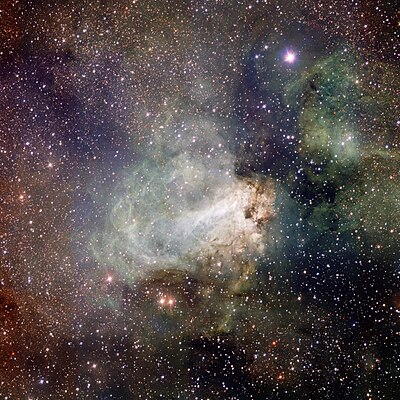Template:POTD/2022-08-17
Appearance
The Omega Nebula is an H II region, a type of emission nebula, in the constellation Sagittarius. It was discovered by Jean-Philippe Loys de Cheseaux in 1745. Charles Messier catalogued it in 1764 as number 17 in his set of comet-like astronomical objects. The nebula is by some of the richest starfields of the Milky Way, in the northern two-thirds of Sagittarius. This astrophotograph of the Omega Nebula was taken by the VLT Survey Telescope (VST), located at the European Southern Observatory's Paranal Observatory in Chile. Captured by OmegaCAM, the VST's wide-field camera, in 2011, the photograph was the telescope's first image to be released.Photograph credit: ESO/INAF-VST/OmegaCAM

